I wrote last week about how summer has made its appearance. The evidence is overwhelming. The calendar says the summer solstice arrived last week, the weather has been hot (and relatively dry, a rarity in the Mid-Atlantic), and my summer-blooming plants are slowly but surely throwing up their colorful blossoms, unfortunately in a time frame that doesn’t suit my Type A level of expectation for immediate flowers. Perhaps the surest sign that summer is here: The weeds are also making their appearance in the garden.
I have an unhealthy obsession with weeds. For me, they represent a great evil that must be dealt with immediately by the most drastic methods available. These methods include using a variety of store-bought and homemade poisons, as well as several old-fashioned techniques for pulling the weeds by hand. In my limited experience, gardeners may disagree on edible plants vs. ornamental plants, annual plants vs. perennial plants, or outdoor vs. indoor plants. They may debate about plant food and plant fertilizer, plant pots, plant irrigation, and many other gardening topics, but most agree that weeds and the never- ending process of removing them represent an existential threat to a gardener’s peace of mind.
There is so much information available to gardeners about removing weeds that I’m hesitant to offer my thoughts on the subject, other than to say that I pull my weeds by hand if I possibly can. I use my hands, not poison, because pulling by hand brings me face-to-face with my sworn enemy, and it helps me deal the ultimate death blow to the weeds. Unfortunately, in my garden the weeds are strangely absent from my flower beds and instead grow between my pavers, stone pathways, beds of river rock, and other places where pulling weeds by hand is impractical, and perhaps as important, painful on your legs and knees. For example, when they constructed my flower beds they lined the bed with rubber dividers that separate the soil from the pavers. Weeds have an unbelievable ability to grow out of the gap between the rubber liner and the pavers, making it slow and tedious to pull them by hand. In these cases, using weed and grass killer is a blessing. I know that, once again, I am annoying my naturalist readers who worry about the environment when spraying poison in the yard, but there you go. (At least we don’t have children or pets running around after I apply the spray.)
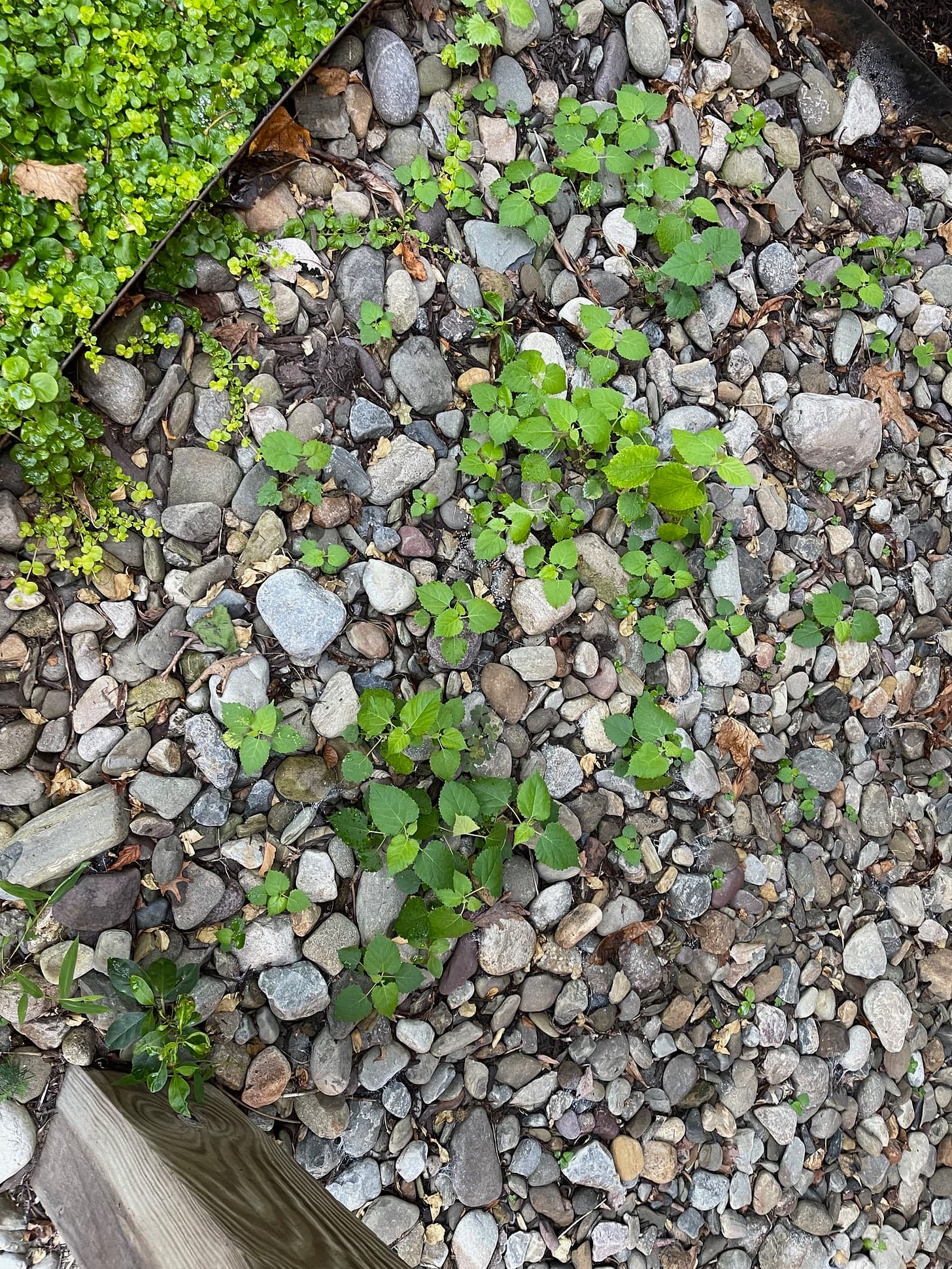

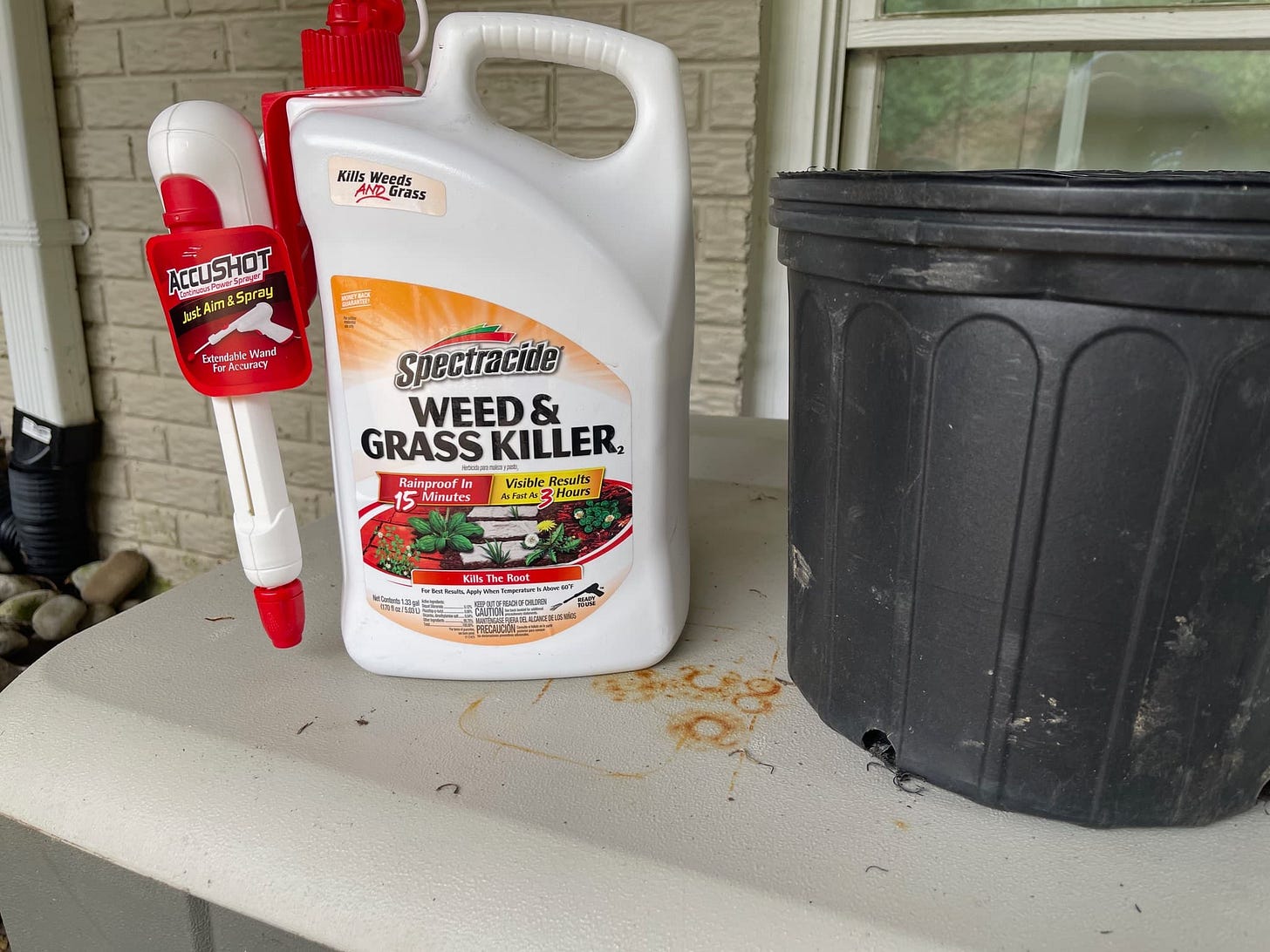
When I do pull weeds by hand, I strive to remove the weed’s taproot from the soil. Wikipedia describes a taproot as “a large, central, and dominant root from which other roots sprout laterally.” Admittedly I’m not the most experienced gardener in the world, but for me, pulling a weed and extracting the taproot is a moment of pure bliss. Gardeners looking to permanently kill a weed will find that getting the taproot in one piece represents total victory. What could be better than pulling the “dominant root” from the ground and marveling at its size and length relative to the size of the weed you see above ground? Last week I found myself dreaming about taproots. What sweet dreams.
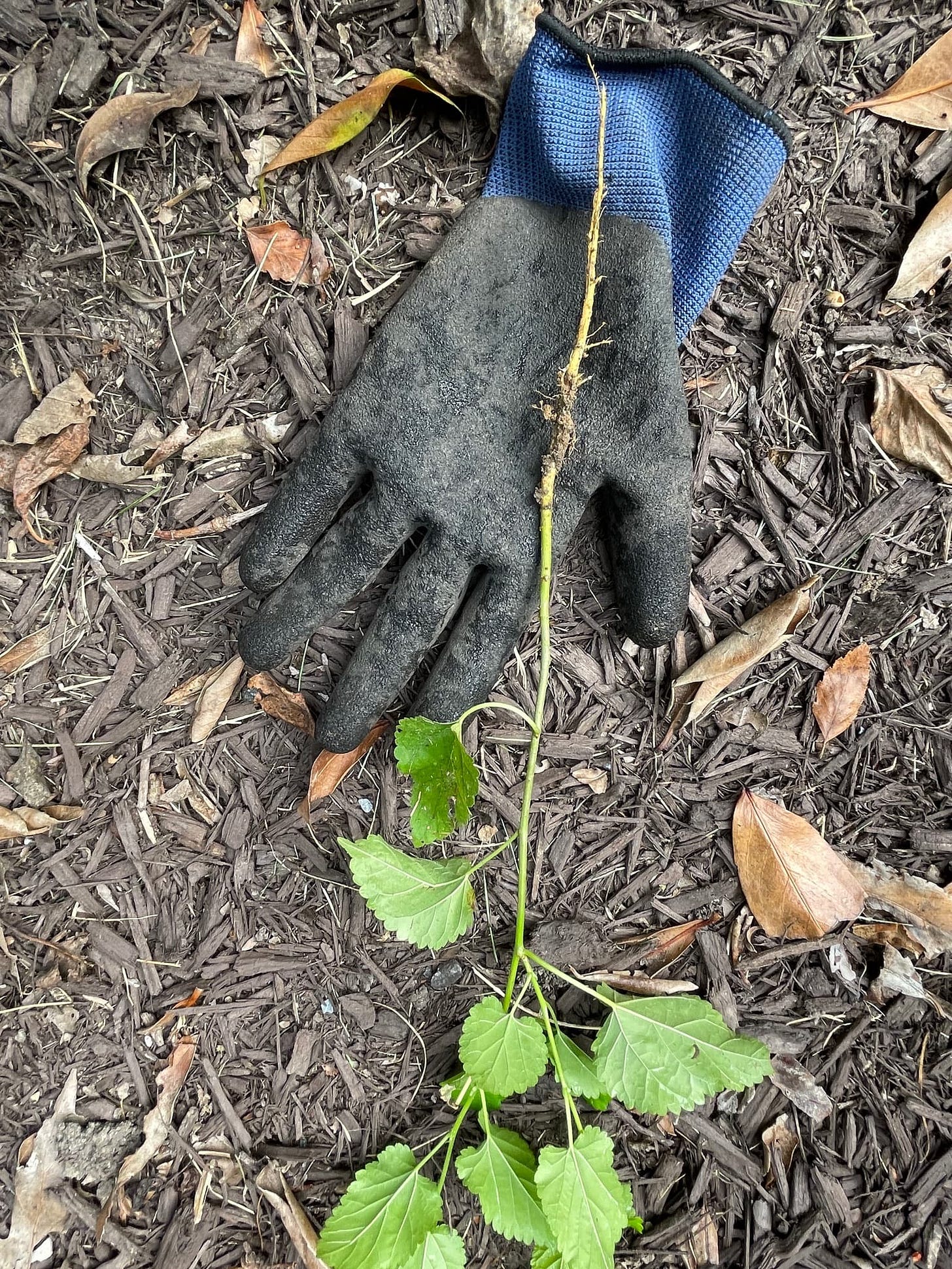
There are many different tools available to help you pull weeds. Some of them are outright dangerous. We used to own a torch that burned the weeds from the flower beds. I think we deemed it too dangerous to keep around the house, especially when the kids were small. While child safety is important, I have to say that lighting that torch and seeing it set the yard on fire was a lot of fun. Nowadays I rely on simpler (and safer) tools to get the job done. I have a long Japanese digging knife with a serrated edge, called a Hori Hori knife, a narrow fork-like tool for digging between the pavers, garden scissors, and my nips in case I’m digging for a taproot and run into something more substantial. Those seem to work for me, but I’m sure gardeners use other tools and techniques to get the job done. If you are pulling weeds that are growing from seeds that germinated in the mulch of your bed, you can do the job quickly by hand without using any tools at all. I’m told there are some real artists who efficiently use a hand hoe to remove shallow weeds from a bed.
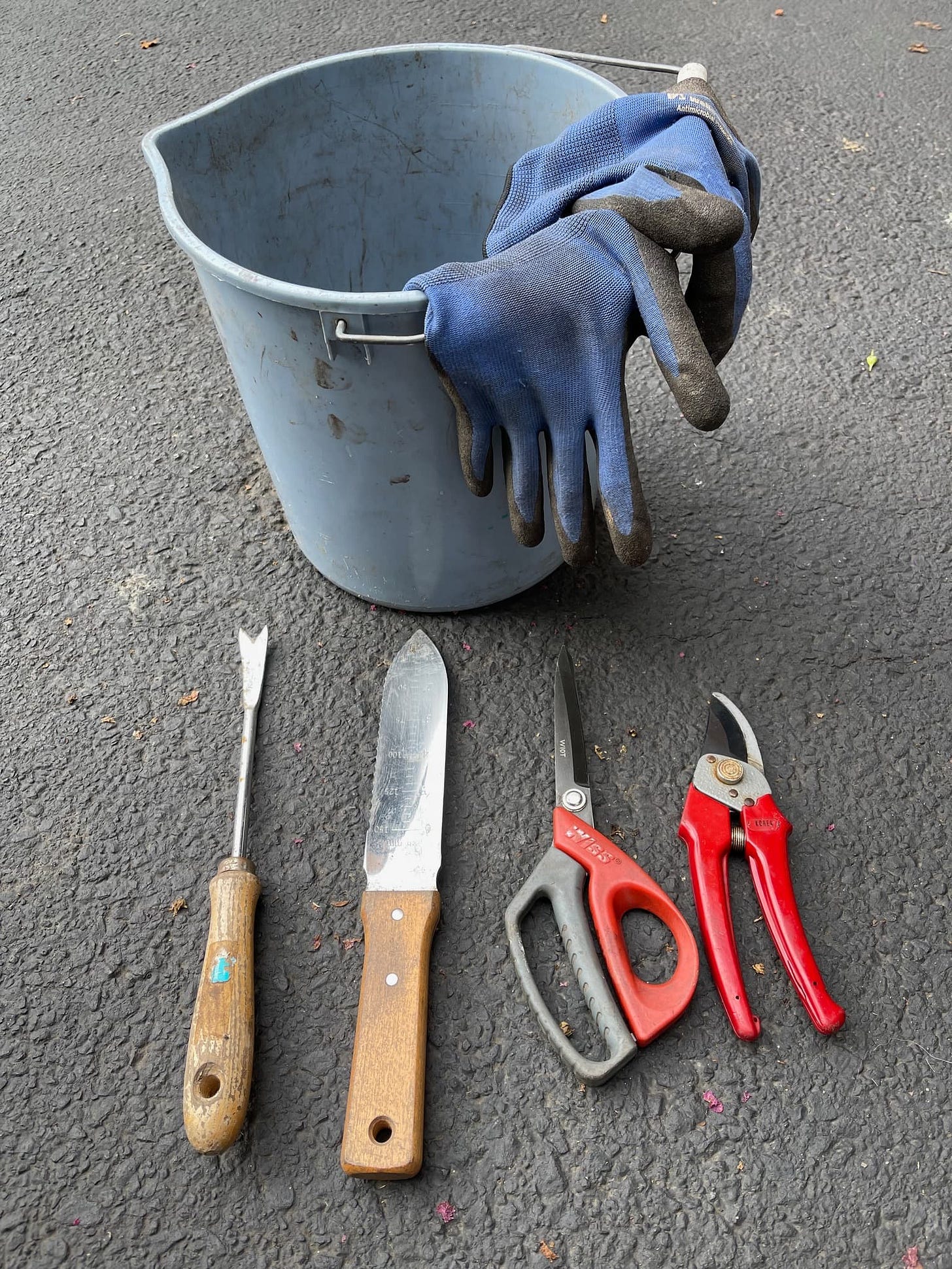
Let me pass along a few other tips about pulling weeds that you might find useful. If you are going for the taproot, try to pull weeds when the ground is wet. The ground is much softer, and the roots slide out more easily. Unless you enjoy getting dirty early in the morning, or don’t mind being hurt by unseen thorns, you should seriously consider wearing garden gloves. Also, take a bucket into the bed with you when pulling weeds. You don’t want to deal with a pile of weeds on the lawn or in the bed after the fact, and you don’t want to have to constantly get up to place the weeds in your yard cart or wheelbarrow. When the bucket is full of weeds, empty it in the yard cart and keep going. Finally, don’t let yourself get distracted with some other cleanup chore, like deadheading or pruning. Try to stay focused on the weeds. Remember that victory lies just ahead if you can finish one section of your garden and pronounce it weed-free.
One last note on pulling weeds. My children gifted me a cool seat for pulling weeds that folds into different configurations for sitting and kneeling. If you’ve been kneeling on a hard surface, like a paver patio or a wood deck, your knees will thank you for the padded stool/seat. You will also be thankful for the handles that help support you when you stand up from your weed-pulling task. Better Homes and Gardens recently sent me an article on the best chairs for pulling weeds, and I was surprised at the variety of chairs to choose from. I’m sure a quick Google search will help you find the best chair for you.
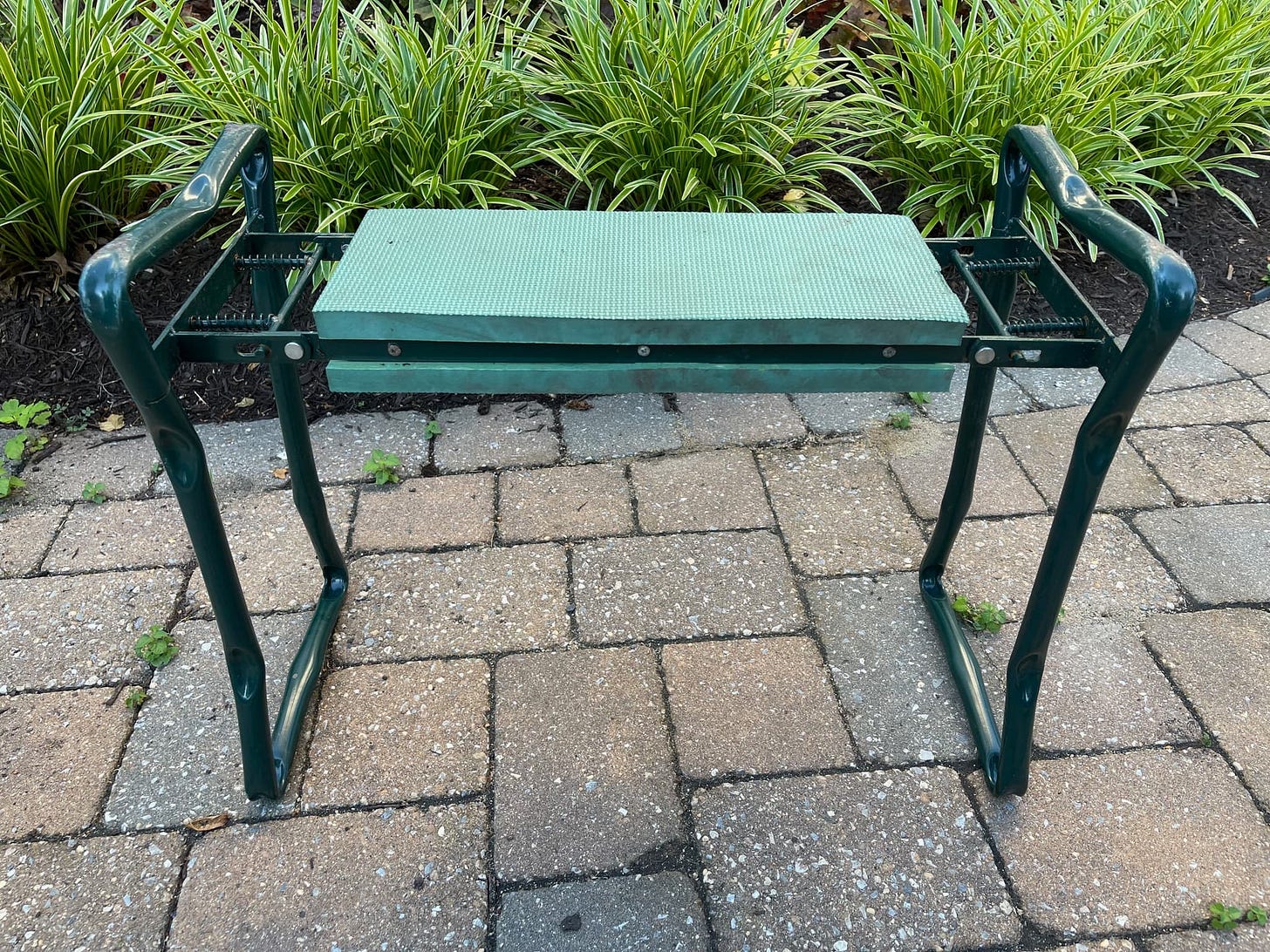
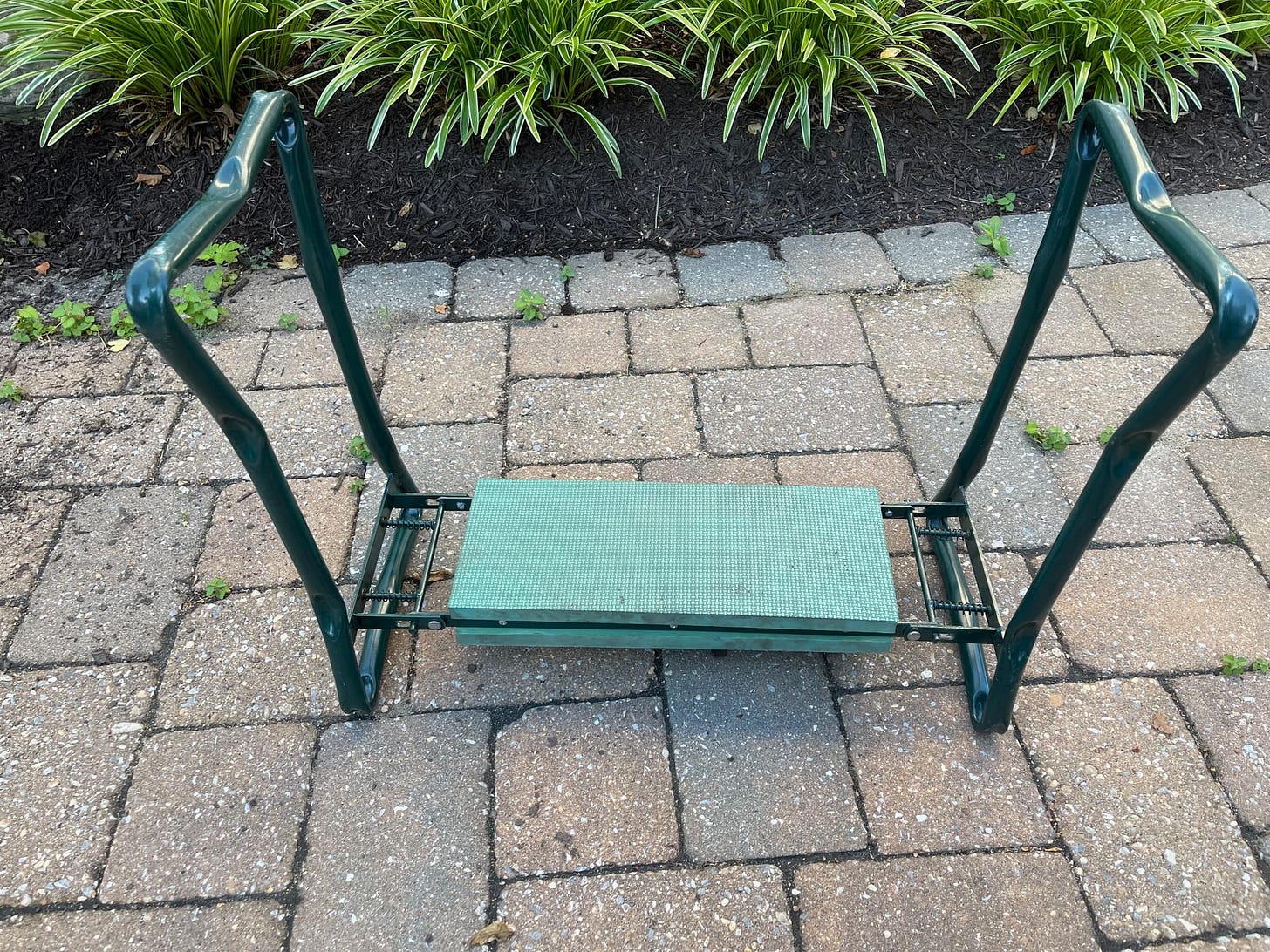
I’ve noticed that when I’m pulling weeds in my beds, I’m constantly kneeling to pull a bunch of weeds, standing up to move to another location, and kneeling again to pull more weeds. Doing this for an hour or so can be very tiring, so take it easy. Don’t do more than you can physically handle and be prepared to grab a hot shower and a Tylenol when you are done. When I consider that I will probably have to pull weeds again tomorrow, I console myself by remembering that I’m retired, the forecast says it’s going to be a pleasant day, and I really don’t have anything better to do.
That’s it for weeds. Next week I’ll get back to writing about flowers and unfortunately, the first casualties of the summer. I don’t know why I seem to be the only gardener in North America who can’t grow shasta daisies, but that seems to be the case. And the deer are having their way in the sun bed. More riveting gardening news here next week in The Painful Education of a Type A Gardener.
If you feel like it, you can share this letter with friends, enemies, etc., etc. Just click on the SHARE button.
You can find all of the previous posts for Type A Gardener in the archives. Just go to the top of the post and click on the small image of me and it should take you right there.




Hi Ken. I use the spectracide product to kill the weeds in my driveway, sidewalks, pavers. It works well when you use it early in the day when temps will get warmer in the afternoons like 70 or so. Brilliant product.